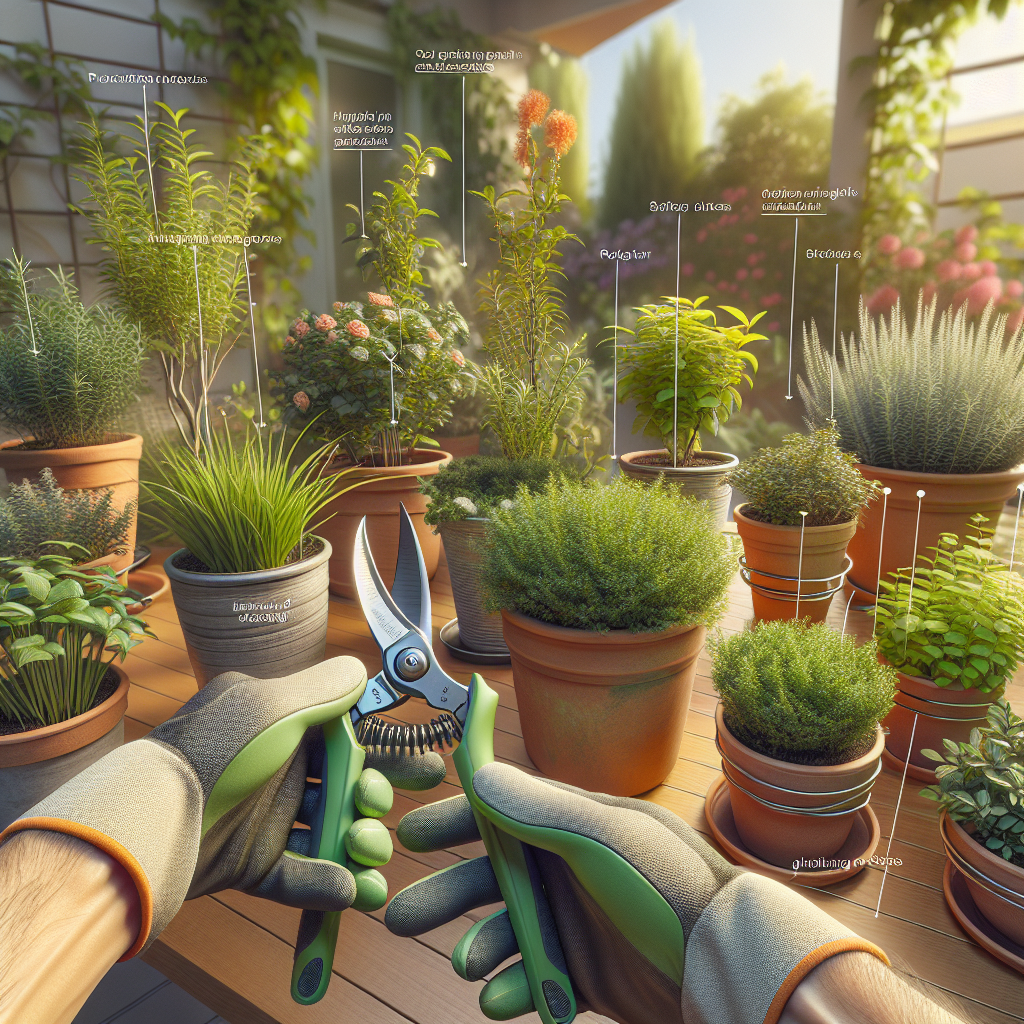Container plants are a great way to bring greenery and beauty into small spaces, whether you’re growing flowers, herbs, or vegetables. However, in order to keep your container plants healthy and thriving, proper pruning is essential. Pruning container plants may seem like a daunting task, but with the right techniques and tools, it can be a simple and satisfying way to care for your plants.
In this article, we will explore the best practices for pruning container plants. From understanding when to prune to knowing which tools to use, we will cover all the important aspects of pruning that will help your container plants reach their full potential. Whether you’re a beginner gardener or have been tending to plants for years, these tips and tricks will help you become a master at pruning your container plants. So grab your shears and let’s get started!
**1. Know When to Prune**
Pruning container plants at the right time is crucial for their health and growth. The timing of pruning can vary depending on the type of plant you have. In general, it’s best to prune container plants in the spring before new growth begins. This allows the plant to focus its energy on producing new leaves and flowers rather than healing from pruning wounds.
Some signs that indicate it’s time to prune your container plants include overgrown branches, dead or damaged foliage, or when the plant starts looking leggy or straggly. You can also prune after flowering to encourage more blooms or throughout the growing season to shape the plant and keep it looking tidy.
**2. Use the Right Tools**
Having the proper tools for pruning is essential in order to make clean cuts that promote healthy growth. Some must-have tools for pruning container plants include sharp bypass pruners for cutting thin stems and branches, sturdy loppers for thicker branches, and handheld shears for shaping and trimming.
It’s important to keep your tools clean and sharp to prevent tearing or crushing the plant tissue while pruning. Clean your tools with soap and water after each use and sharpen them regularly with a sharpening stone or file. Investing in high-quality gardening tools may cost more upfront but will save you time and effort in the long run.
**3. Practice Proper Technique**
When it comes to pruning container plants, using the correct technique is key to ensuring successful growth and minimizing damage. Always start by removing dead or diseased branches first to prevent any spread of disease throughout the plant.
For thin stems and branches, make clean cuts at a 45-degree angle just above a leaf node or bud junction using bypass pruners. For thicker branches, use loppers and make cuts at an angle just outside the branch collar (the swollen area where the branch meets the main stem). Avoid leaving stubs behind as they can rot and attract pests.
**4. Don’t Overdo It**
While pruning is essential for maintaining healthy container plants, it’s important not to overdo it. Removing too much foliage can stress the plant and hinder its ability to photosynthesize effectively.
Start by removing no more than one-third of the plant’s growth at a time, especially if you’re unsure about how much to prune. Step back occasionally while pruning to assess how the plant looks from different angles before making more cuts.
**5. Monitor Growth After Pruning**
Once you’ve finished pruning your container plants, monitor their growth regularly to see how they respond. Healthy new growth should appear within a few weeks after pruning if done correctly.
If you notice any signs of stress such as wilting leaves or stunted growth after pruning, reassess your technique and adjust accordingly for future prunings.
In conclusion…
Pruning container plants may seem like a daunting task at first, but with practice and patience, you’ll soon become comfortable with this essential gardening skill.
By following these best practices for pruning container plants – knowing when to prune,
using the right tools,
practicing proper technique,
avoiding over-pruning,
and monitoring growth afterward – you’ll be able
to keep your container garden looking its best year-round.
Next time you go out
to tend
your garden,
grab those shears
and give
your
container
plants
some much-needed TLC by giving them a good
prune.
For any additional tips or advice on caring for your specific types of container plants,
don’t hesitate
to consult
a local
gardening expert
or nursery.
Happy gardening!
—
**FAQs about Pruning Container Plants**
Q: Can I use regular scissors instead of gardening shears?
A: While regular scissors may work in a pinch for small stems or leaves,
it’s best
to invest
in quality gardening shears
for efficient
and precise cutting.
Regular scissors may not be sharp enough
to make clean cuts
on thicker stems,
which could damage
the plant tissue
Q: What should I do if I accidentally cut off too much of my plant while pruning?
A: If you accidentally remove too much foliage during pruning,
don’t panic.
Monitor
the plant closely
for signs of stress
such as wilting leaves or stunted growth.
Water properly
and ensure adequate sunlight intake
to help
the plant
recover
from
the shock
of over-pruning.
Q: Is there a specific time of day that is best for pruning my container plants?
A: It’s generally recommended
to prune early in
the day before temperatures rise for optimal results.
This allows
the plant enough time
to recover from any stress caused by cutting.
Remember – every plant has its own unique needs when it comes
to
pruning;
while these general guidelines are helpful,
it’s always best
to research
specific care instructions
for each type
of
container
plant
Happy Gardening!













